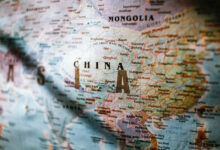General Context Of Doing Business in China
[dropcap]Y[/dropcap]ou have made a decision to start a business in China or you are employed in a company which made a decision to enter the Chinese market? The first analysis which one must make is the basic macro surrounding analysis.
Depending on the sphere your business belongs to, we suggest that, before you decide to enter the Chinese market, you study well the conditions for doing business
Let see what the PESTGDP analysis say:
“P” – “political”. China has adopted a socialist regime with Chinese characteristics. The areas that are regulated from the side of the state and law are: tax policy, labor policy, trade restrictions, environmental laws, import/export tariffs and political stability.
“E” – “economical”. Economic factors include a set of measures that encompass: measures of economic growth, interest rates, exchange course, and inflation rate. These factors visibly influence ways in which one can and should do business in China. For example, interest rates are regulated by the Chinese National Bank, Chinese Central Bank, will mostly influence on the price of the companies’ capital and therefore the possibility of growth and company development. On the other side, the exchange course can significantly influence on export costs in China, namely the decision of the company whether exporting to China is profitable or not.
“S” – “social-cultural”. The social and cultural factor should never be neglected when talking about entering the Chinese market. Three important concepts which will be discussed in a separate text are: “Guanxi”, “Mianzi”, and “Renqing”.
“T” – “technological”. These factors include technological aspects such as research and innovation, automatization, technological facilitation. This is one of the most significant differences in China today. These factors today can be restrictions to entering, working and success of companies in China but reasons to search for co-operators that are more efficient in producing ready made products, too. Such technological changes lead towards cost decrease, better quality and improvement of China in the sphere of innovations.
“G” – “global”, which speaks about a mutual connection and inter-dependence between China and the rest of the world.
“D” – “demographic”, that includes factors such as the number of population, ethnical mix, natality and population age. These factors make just a part of the analysis from the position of buyers and product consumers.
Finally, “P” – “physical”, which implies physical, that is natural factors. Bearing in mind that natural resources and environmental problems present the basic limit to Chinas’ economic growth, these factors can’t be neglected.
Depending on the sphere your business belongs to, we suggest that, before you decide to enter the Chinese market, you study well the conditions for doing business (laws and regulations), the basics of doing business in the sphere of your interest (do not forget that the laws and regulation frequently change), as well as, your target group.


